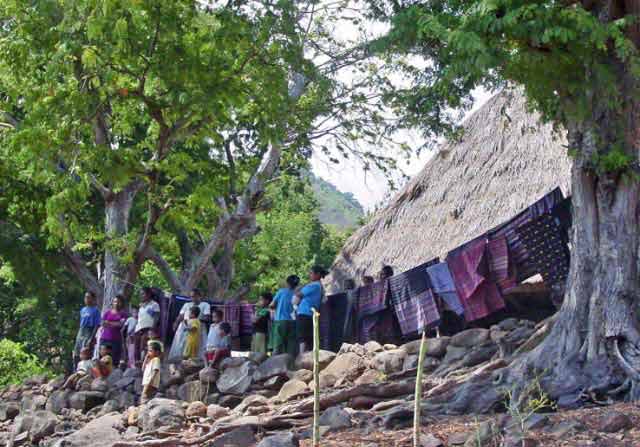HOME

|
HOME |
 |
|
|
|
|
The view from the top afforded a pleasant view over the Flores Sea. Our guide gave us the lowdown on the village we were about to visit.
Suddenly a group of men dressed in traditional garb appeared to escort us to the village. Takpala Village Is one of the few catholic villages on Alor. It has about 15 traditional houses. The villagers were anxiously waiting for us, having decorated the surrounding grounds with hundreds of Ikat weavings. These were much different from the ones we saw in Timor, thinner fabric, brighter colors and more stripes. The village themselves do not weave ikat, but make baskets instead. |
 |
 |
|
||||||||||||||||||||
|
|||||||||||||||
|
|||||||||||||||||||
|
NEXT LEMBATA>>>> |
|||
|
|
|||